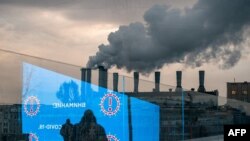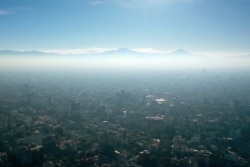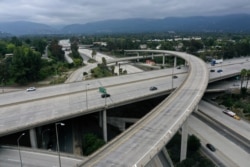COVID-19 lockdowns brought bluer skies to some of the world's smoggy cities.
But not everyone's air got cleaner. And even with the improvements, air in some cities remained unhealthy.
After initial reports of dramatic drops in air pollution, scientists looking more deeply at the data are finding the improvements were smaller than they expected. Not all pollutants declined. And the benefits varied widely from place to place.
Their findings have implications for efforts to make the world's air healthier.
As the coronavirus raged through Wuhan and other Chinese cities in early 2020, the Chinese government imposed the first large-scale lockdowns. Traffic vanished from city streets. Satellites recorded a dramatic drop in nitrogen dioxide, abbreviated NO2, a highly reactive pollutant generated by burning fossil fuels.
Other cities saw drops as the pandemic spread around the world.
Weather effects
It was hard to tell how much the lockdowns were responsible, though, because air pollution levels depend heavily on the weather. A windy day can clean out a city's air, while a still, humid day can worsen it.
So, University of Birmingham atmospheric chemistry professor Zongbo Shi and his colleagues used machine learning to "de-weather" the data in a new study in the journal Science Advances.
They found that the declines were real, but smaller than expected. For example, after the lockdown in Wuhan, NO2 levels fell by as much as 90%. But when Shi's group removed the effects of weather, they found that the lockdown was responsible for only about a third of that.
That's partly because life did not shut down entirely. In London, for example, while passenger car traffic dropped by 80%, delivery trucks and other heavy vehicle traffic was down by only 30% to 40%.
Also, with much of the workforce working from home, electric power use dipped only slightly, so emissions from power plants did not decline much, either.
Meanwhile, while NO2 declined, levels of other dangerous pollutants increased.
That's because quirks of atmospheric chemistry are only partly understood.
Ozone increases
Counterintuitively, one pollutant, ozone, can increase when NO2 levels decline. But many scientists were surprised by how big the effect was during COVID-19 lockdowns.
A study published in the journal Science documented extremely high levels of ozone and fine-particle pollution in northern Chinese cities during the coronavirus lockdown in late January and early February.
Bad weather conditions – stagnant air and high humidity – combined with the unfortunate backlash from lower NO2 emissions to make the situation worse.
"We're talking about an unprecedented (NO2) emissions cut, but also we see this worse-than-normal pollution event," said study co-author Yuan Wang, an atmospheric scientist at California Institute of Technology. "This is what we didn't expect."
Fine-particle pollution, known as PM2.5, also went up in many places in the United States, said University of Delaware environmental scientist Cristina Archer.
In a study she and her colleagues published in the Bulletin of Atmospheric Science and Technology, they saw NO2 levels decline across the country.
"Then we're like, 'Oh, let's look at PM2.5," she said. "And, 'Are you kidding me?' It was more likely to have gone up than gone down."
More to learn
The same factors that made NO2 drops smaller than expected probably affect ozone and fine-particle pollution, she said: Car traffic was way down, but diesel delivery vehicle traffic wasn't. Power plants were mostly unaffected.
Plus, chemicals in the air can interact with one another to produce particle pollution in ways that researchers don't fully understand. Small changes in one can make an outsized difference in another. Scientists said they will be studying what happened during the COVID-19 lockdowns for years to come.
In some cities, all the factors aligned. Los Angeles residents got clearer skies this year than they have seen in ages, for example.
But even the biggest jolt to the economy in modern history was not enough to produce healthy air in cities such as Beijing and Delhi.
"There need to be more fundamental changes to the way we live to give us the clean air we need," the University of Birmingham's Shi said.












